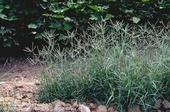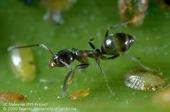- Author: Tunyalee A. Martin
- Author: Cheryl A. Wilen
- Author: Thomas Getts
- Author: Jutta Burger, Cal-IPC
- View More...

California has abundant wildlands — forests, rangeland, open areas, wildlife refuges and national, state, and local parks — that need protection from invasive plants. Invasive plants affect all Californians by increasing wildfire potential; reducing water resources; accelerating erosion and flooding; threatening wildlife; degrading range, crop and timberland; and diminishing outdoor recreation opportunities. According to the California Invasive Plant Council (Cal-IPC), more than 200 identified plant species harm California's wildlands.
Cal-IPC and the University of California...
- Author: Elaine Lander
- Author: Karey Windbiel-Rojas

As the days get shorter and the temperatures begin to cool, now is the time to practice weed management for annual cool-season weeds. It's also not too early to consider management for weeds that emerge in springtime.
Using integrated pest management (IPM) methods can help reduce the presence of most weeds. In lawns, good practices such as proper watering, mowing, and fertilizing can help maintain healthy turfgrass. Likewise, in landscapes, hand-weeding, cultivation, and use of mulches can be effective in controlling weeds. More specific information about these and other IPM practices can be found in our Pest Notes publications on
Using mulch in your garden or landscape helps conserve water and prevent weeds. This new UC IPM video explains how to prepare the site, describes various types of organic mulch available, and demonstrates useful techniques for effective weed control.
For more information on mulch, see the UC IPM website about using mulch in the garden.
See UC IPM's pages on weed identification and control:

Download the free booklet at the bottom of the page!
1. Ants
Most people deal with ants around their home at some point. Because most ants live outdoors, focus efforts on keeping ants from entering buildings by caulking entryways. Follow good sanitation practices to make your home less attractive to ants. Spraying ants inside the home will not prevent more ants from entering. Use baits to control the ant colony. Pesticide baits work by attracting worker ants who then take the poison back to the nest where the entire colony, including queens, can be killed. In the landscape, ants protect...


